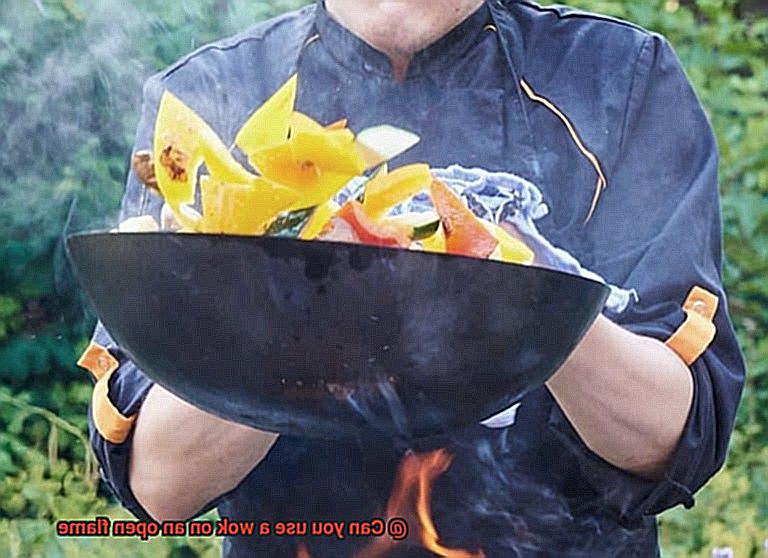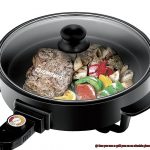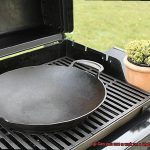Are you a passionate cook who loves to experiment with different flavors and techniques in the kitchen? If so, you’ve likely discovered the magic of wok cooking. The sound of oil sizzling, steam hissing, and spices wafting through the air creates a symphony of flavors that tantalizes your taste buds. But have you ever considered using your wok on an open flame?
While it may seem like a natural step for those who adore high-heat cooking, using a wok on an open flame requires some caution and preparation. In this blog post, we’ll explore everything you need to know about using your wok safely and effectively over an open flame.
Firstly, let’s dive into why the wok is such a versatile and popular cooking tool. From stir-fries to deep-frying, steaming to smoking, there’s almost nothing that can’t be cooked in a wok. However, when it comes to using it on an open flame, there are certain hazards to keep in mind.
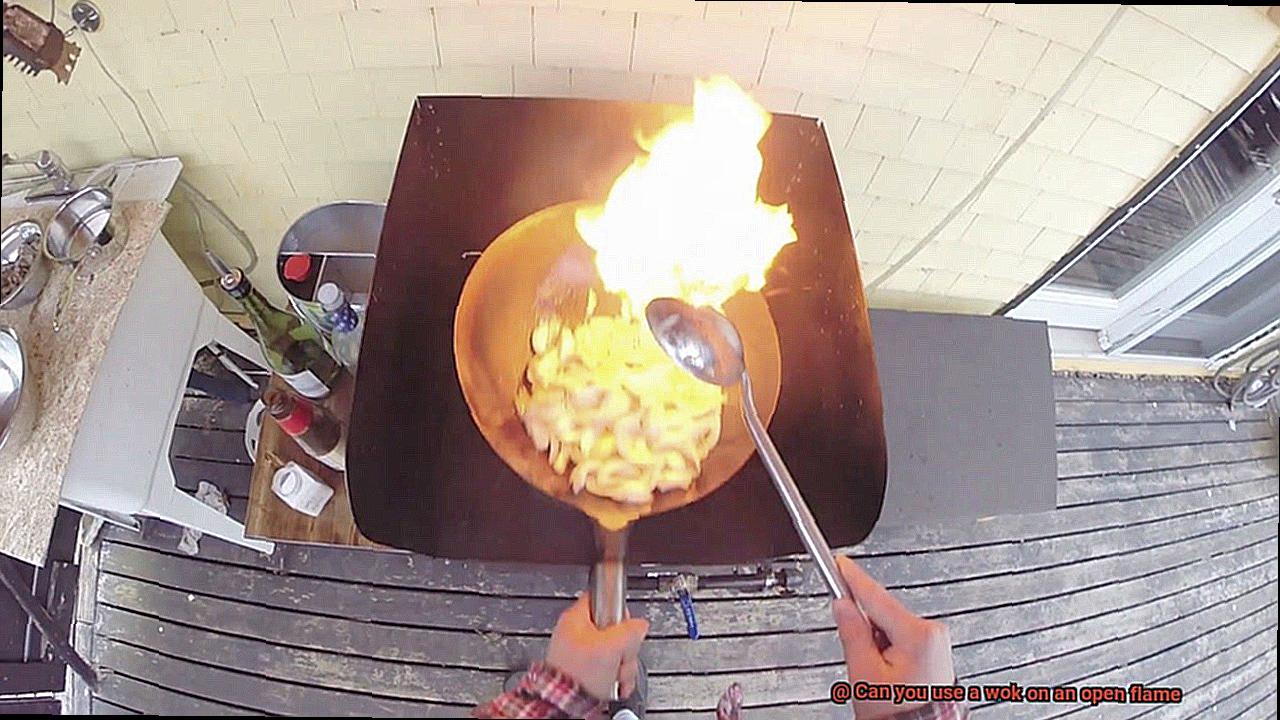
But don’t worry – we’re here to guide you through every step of the process. We’ll cover essential factors such as choosing the right type of wok for open-flame cooking and ensuring proper ventilation in your kitchen. We’ll also provide practical tips for seasoning your wok and maintaining its longevity.
Whether you’re an experienced chef or just starting out with Asian cuisine, this post will give you all the knowledge you need to master using your wok on an open flame. So get ready to unleash your inner culinary artist and create some mouth-watering dishes.
Contents
What is a Wok?
If you’re interested in Asian cuisine, then you need to know about the wok. This round-bottomed pan originated in China and is a fundamental tool for cooking up a storm in many Asian countries. The wok’s versatility knows no bounds – it can be used for stir-frying, deep-frying, steaming, boiling, and even smoking food.
Woks come in different sizes and shapes, ranging from 8 to 14 inches in diameter. Traditionally made of carbon steel, cast iron, or stainless steel, they are a sturdy and durable option that can handle high heat without warping or melting. Avoid woks made from thin metal or coated with non-stick material if you plan on using them over an open flame.
What makes the wok so unique is its design. The round shape allows for even heat distribution, which results in quick and efficient cooking. The high sides also prevent food from spilling over while stirring. Its long handle or two small handles on opposite sides make it easy to handle and maneuver while cooking, ensuring that each piece is cooked evenly.
To use a wok on an open flame, it’s essential to season it properly. Seasoning involves heating the wok with oil to create a non-stick surface and prevent rusting. This step is crucial before using the wok for the first time and should be repeated periodically.
Apart from its functional design, the wok has cultural significance in Asian cultures. It’s considered a symbol of family unity and harmony since it’s often used to prepare meals for large gatherings. The round shape of the wok also symbolizes completeness and continuity.
Types of Woks for Open Flame Cooking
If you’re a fan of Asian-inspired dishes and want to bring the flavors of your favorite restaurant into your own kitchen, using a wok for open flame cooking is the perfect way to achieve that authentic taste and texture. But with so many types of woks available, it can be overwhelming to choose the right one. Here are five sub-sections that explain the different types of woks that can be used for open flame cooking:
Carbon Steel Woks
Durable and lightweight, carbon steel woks are the most versatile and commonly used woks for open flame cooking. They heat up quickly, making them ideal for high-heat cooking methods like stir-frying, deep-frying, and other Asian-inspired dishes. Plus, they require less maintenance than cast iron woks. However, they can be prone to rust if not seasoned properly.
Cast Iron Woks
Cast iron woks are known for their excellent heat distribution and retention properties, making them perfect for slow-cooking soups and stews on an open flame. However, they can be heavy and require more maintenance than other types of woks.
Stainless Steel Woks
If you want a non-stick surface without the use of coatings or chemicals, stainless steel woks are a good option. They are easy to clean and maintain and provide a sleek, modern look in your kitchen. However, they don’t heat up as quickly as carbon steel or cast iron woks.
Non-Stick Woks
Non-stick woks are coated with a non-stick material that prevents food from sticking to the surface. However, they should be avoided for high-heat cooking as the coating can break down and release toxic fumes. They are better suited for low-heat cooking methods.
Electric Woks
For those who don’t want to use an open flame, electric woks provide a convenient alternative. They are designed to be used on a countertop or table and don’t require an open flame. However, they may not provide the same level of heat as traditional woks.
Benefits of Using a Wok on an Open Flame
This cooking method has numerous benefits that will revolutionize the way you cook and eat.
Firstly, the high heat capacity of a wok is ideal for stir-frying and searing food quickly. This means that your ingredients will cook evenly and won’t stick to the pan, resulting in mouth-watering and flavorful dishes every time. Plus, the unique round shape of the wok allows for easy tossing and flipping, making you feel like a professional chef in no time.
But wait, there’s more. Using a wok on an open flame is also great for cooking larger quantities of food. Its deep sides prevent spills and splatters, keeping your stove clean while allowing you to cook multiple dishes at once. This makes it perfect for feeding a crowd or meal prepping for the week ahead.
In addition to its convenience, using a wok on an open flame is also a healthier option. It requires less oil than traditional frying methods, meaning that you can indulge in delicious meals without worrying about your waistline. The high heat capacity of the wok seals in nutrients and vitamins while keeping your food crisp and flavorful.
But perhaps the best thing about using a wok on an open flame is its versatility. You can use it to cook a wide variety of dishes, from stir-fries and curries to soups and stews. Its ability to handle both high heat and low simmering temperatures make it an excellent all-purpose cooking vessel.
How to Select the Right Wok for Open Flame Cooking
To ensure a perfectly cooked dish, consider these key factors when choosing a wok for open flame cooking.
Material Matters
The material of the wok is crucial in achieving even heat distribution. Carbon steel is the go-to choice for traditional stir-fry cooking as it heats up quickly and evenly. However, if you’re looking for durability and rust-resistance, opt for stainless steel. Cast iron retains heat exceptionally well, but can be heavy and slow to heat up.
Size it Up
The size of your wok directly affects how much food you can cook at once. For home cooking, a 14-inch wok is a great size, but if you frequently cook for large groups, consider a larger wok.
The Shape of Things
When it comes to woks, shape matters. Round-bottomed woks are traditional, but they can be unstable on an open flame stove. Flat-bottomed woks offer more stability but may not distribute heat as evenly. Choose the shape that works best for your cooking needs.
Seasoning is Key
Before using your new wok for the first time, proper seasoning is necessary. This involves heating the wok with oil to create a non-stick surface and prevent rusting.
Go For Sturdy
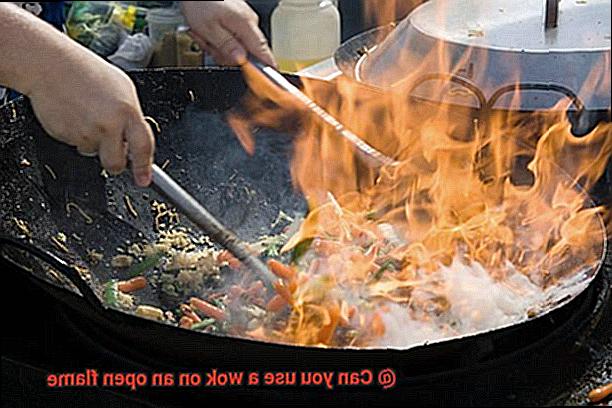
Woks made from thin metal or coated with non-stick materials are not recommended for open flame cooking. Choose a wok made from sturdy materials like carbon steel, cast iron, or stainless steel that can handle high temperatures without warping or melting.
Consider Your Cooking Style
Your cooking style should also factor into your wok selection process. Are you a stir-fry aficionado or do you prefer making soups and stews? The type of dishes you plan to cook can help determine the size and shape of the wok that will work best for you.
How to Season a Wok Before Use
To get the most out of your cooking experience, it is crucial to season your wok before use. This process involves heating the wok with oil to create a natural non-stick surface that will make cooking easier and prevent rusting. Here are some in-depth tips on how to season your wok before use:
Gather Your Materials
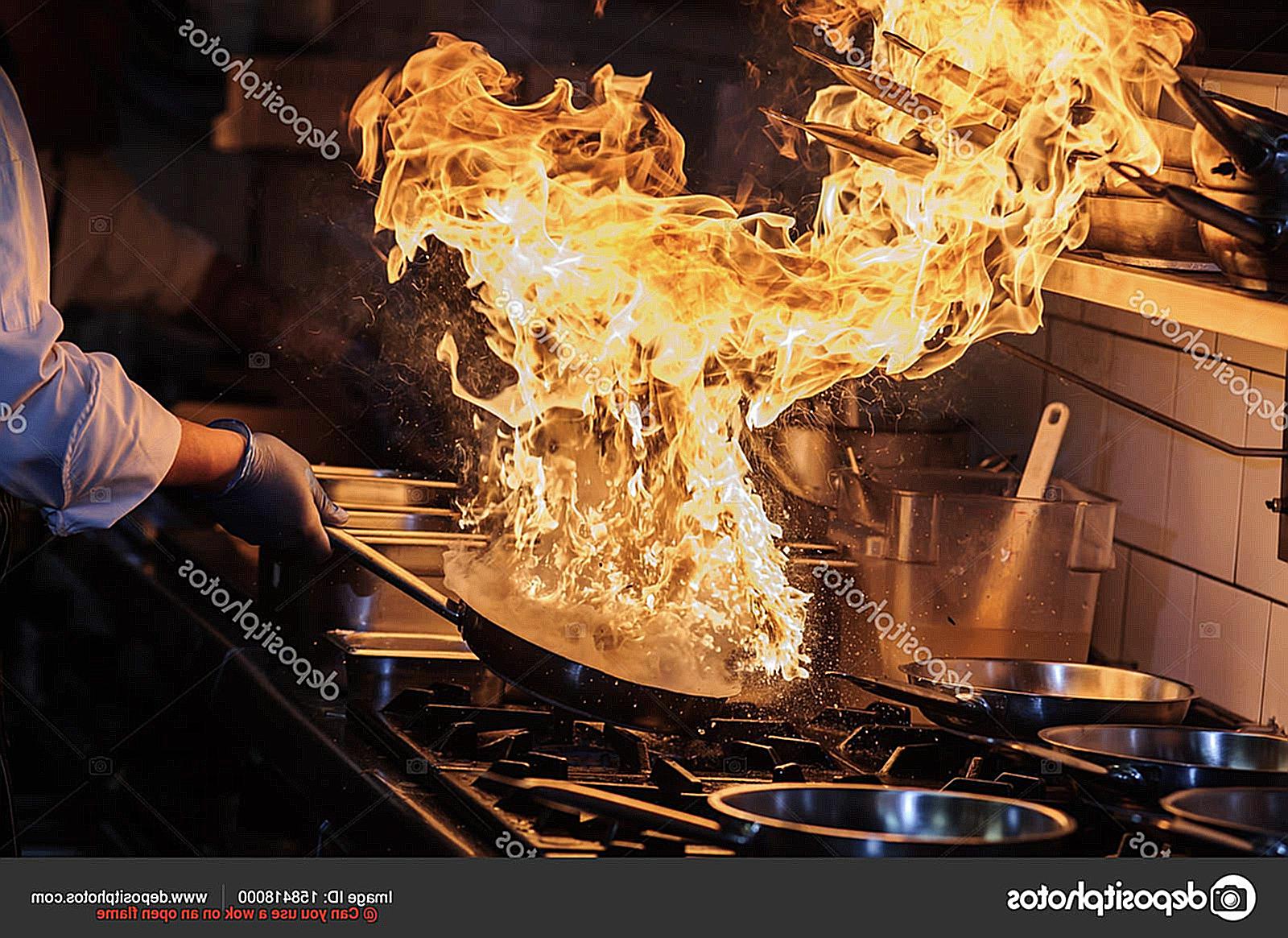
To get started, you will need vegetable oil, kosher salt, and paper towels. These simple ingredients will help you create the perfect seasoning for your wok.
Wash Your Wok
Before seasoning your wok, make sure to wash it thoroughly with warm water and soap to remove any protective coating or rust. It is essential to rinse the wok thoroughly with water and dry it completely before starting the seasoning process.
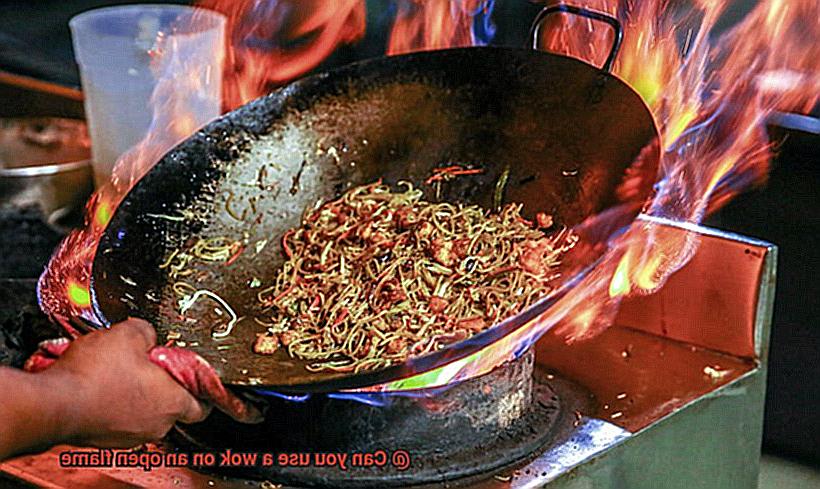
Heat Your Wok
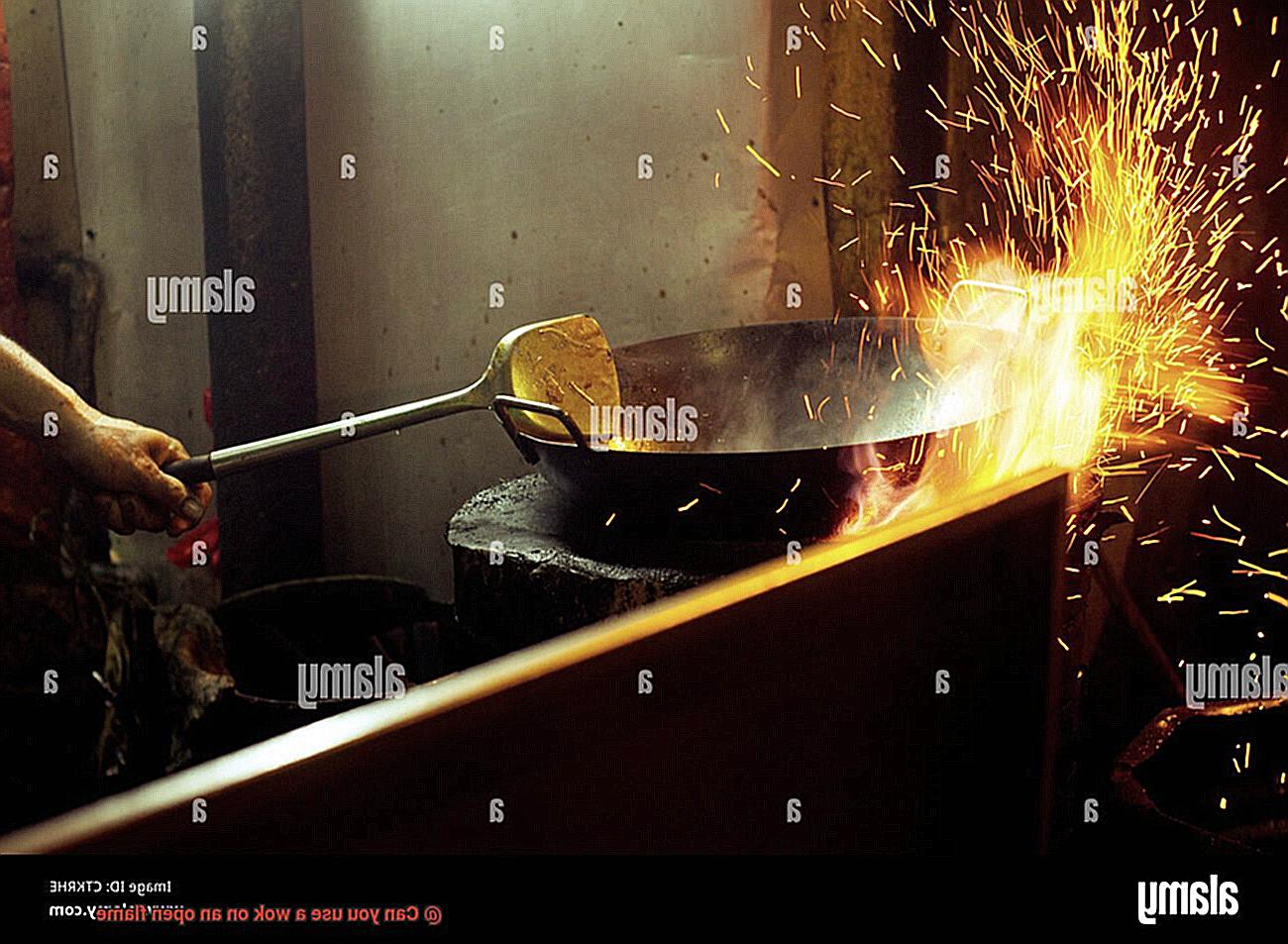
Place the wok on a stovetop burner set to medium-high heat. Add a tablespoon of oil to the wok and use a paper towel or cloth to spread it evenly across the surface, including the sides.
Wait for the Oil to Smoke
Allow the wok to heat up for about 15 minutes, or until the oil starts to smoke. This is a sign that the oil has reached its smoking point, which is an indicator that your wok is ready for seasoning. Be sure to turn on your kitchen’s exhaust fan or open a window as this process can create smoke.
Cool Down the Wok
Once the oil has started smoking, turn off the heat and allow the wok to cool down completely. This cooling process will allow the oil to settle and create a natural non-stick surface inside the wok.
Repeat The Process
To achieve optimal seasoning, repeat this process 2-3 more times until the wok develops a dark patina. This means that the oil has penetrated into the pores of the metal, creating a non-stick surface that will improve with each use.
Remember to never use soap or abrasive cleaners on your wok after seasoning as this can damage the seasoning. Instead, use hot water and a soft sponge or brush to clean it after each use. Additionally, you should avoid cooking acidic foods in your wok as they can break down the seasoning.
Tips for Using a Wok on an Open Flame
Using a wok on an open flame is an efficient and exciting way to cook your meals, but it can also be challenging if you’re not familiar with the proper techniques. Here are five essential tips to follow to ensure that you get the most out of your wok:
Preheat Your Wok
Before adding any ingredients to your wok, preheat it on high heat for at least 5 minutes. This will prevent sticking and ensure that your food cooks evenly. A well-preheated wok also allows you to cook your food quickly, which is essential when using an open flame.
Use the Right Oil
Choosing the right oil is crucial when using a wok on an open flame. High smoke point oils such as peanut, canola, or vegetable oil are ideal for stir-frying in a wok. These oils can handle high heat without burning, ensuring that your food cooks evenly and doesn’t stick to the wok.
Cut Ingredients into Small and Uniform Pieces
To ensure that your food cooks evenly and quickly, cut all ingredients into similar sizes and thicknesses. Smaller pieces also allow you to stir-fry your ingredients more efficiently, making the most of the high heat from the open flame.
Avoid Overcrowding Your Wok
Overcrowding your wok will cause the temperature to drop, resulting in uneven cooking. Instead, cook in small batches if necessary to avoid overcrowding. This allows you to maintain high heat throughout the cooking process and ensures that all of your ingredients cook evenly.
Use a Long-Handled Spatula
A long-handled spatula is essential when cooking with a wok on an open flame. It helps to keep your hands away from the heat source while allowing you to stir and flip your ingredients easily. A long-handled spatula also helps you to reach the bottom of the wok more easily, ensuring that all ingredients are evenly cooked.
By following these tips, you can use your wok on an open flame like a pro. But there’s more to it than just these five tips. Here are a few additional techniques to keep in mind:
- Toss Your Ingredients: Tossing your ingredients in the air helps to ensure even cooking and prevents them from sticking to the wok.
- Add Sauces Towards the End: Adding sauces too early can cause them to burn and stick to the wok. Instead, add them towards the end of cooking when there’s less moisture in the pan.
- Clean and Care for Your Wok: After each use, wash your wok with hot water and a gentle soap (avoid harsh abrasives that can damage the seasoning), and dry it thoroughly before storing it away.
Common Mistakes to Avoid When Using a Wok on an Open Flame
As an expert on the topic, I have compiled a list of common mistakes to avoid when using a wok on an open flame.
Firstly, using a wok that is too small for the size of the flame is a common mistake. This can cause your food to cook unevenly and may even result in burning or scorching. To avoid this, ensure that you use a wok that is large enough for your flame and ingredients.
Secondly, not preheating your wok properly before adding ingredients can also be detrimental to the cooking process. The wok should be heated until it is very hot before adding any oil or food. This will prevent sticking and allow for an even cooking process.
Another mistake to avoid is using the wrong type of oil. When cooking with a wok on an open flame, it’s important to use an oil with a high smoke point, such as peanut or vegetable oil. Using oils with a low smoke point, such as olive oil, can lead to smoking and even fires.
Overcrowding your wok is another common mistake. Adding too much food at once can cause the temperature to drop, resulting in uneven cooking and potentially dangerous situations. It’s best to add ingredients in small batches and give them plenty of room to cook.
Lastly, not cleaning and maintaining your wok properly can lead to issues during cooking. A dirty wok can lead to food sticking and burning, as well as potential health hazards from bacteria buildup. Make sure to clean your wok thoroughly after each use and store it in a dry place.
Conclusion
To sum up, cooking with a wok on an open flame is a fantastic way to stir up some scrumptious Asian-inspired meals. However, it’s essential to exercise caution and take necessary precautions to ensure safety and efficiency.
When selecting a wok for open flame cooking, it’s crucial to consider factors such as material, size, shape, and your preferred cooking style.
Carbon steel woks are the go-to option for high-heat cooking methods like stir-frying, while cast iron woks are perfect for slow-cooking soups and stews. If you’re looking for a non-stick surface without coatings or chemicals, stainless steel is the way to go.
To use your wok like a pro on an open flame, preheating it correctly is key. Additionally, using the right oil, cutting ingredients into small pieces, avoiding overcrowding the wok and using a long-handled spatula will make all the difference in creating that perfect dish.
Tossing ingredients in the air ensures even cooking while adding sauces towards the end prevents them from burning. Lastly, it’s vital to avoid common mistakes such as using a tiny wok for your flame or not cleaning it after each use.

